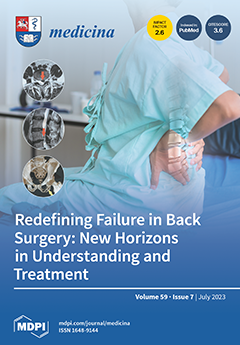Background and Objectives: The fruit of
Schisandra chinensis (Turcz.) Baill. is widely used medicinally to treat coughs, asthma, exhaustion, eczema, and pruritus in Northeast Asian countries, including Korea, China, and Japan. This study was designed to investigate the effects of
S. chinensis
[...] Read more.
Background and Objectives: The fruit of
Schisandra chinensis (Turcz.) Baill. is widely used medicinally to treat coughs, asthma, exhaustion, eczema, and pruritus in Northeast Asian countries, including Korea, China, and Japan. This study was designed to investigate the effects of
S. chinensis on dermatitis in mice with calcipotriol (MC-903)-induced atopic dermatitis (AD), and its effects on skin barrier dysfunction was also investigated.
Materials and Methods: The inhibitory effects of an ethanolic extract of
S. chinensis (EESC) on skin lesions, water content, water-holding capacity (WHC), histopathological abnormalities, and inflammatory cytokine and chemokine levels were evaluated in mice with AD induced by MC903.
Results: Topical EESC ameliorated skin lesions, reduced skin water content, and increased MC903-induced WHC. EESC also prevented MC-903-induced histopathological abnormalities such as epidermal disruption, hyperkeratosis, spongiotic changes, and immune cell infiltration in inflamed tissue. Moreover, topical EESC reduced MC-903-induced levels of pro-inflammatory cytokines and chemokines, such as tumor necrosis factor (TNF)-α, interleukin (IL)-1β, IL-4, IL-6, IL-8, monocyte chemotactic protein (MCP)-1, and thymic stromal lymphopoietin (TSLP). Furthermore, unlike dexamethasone, EESC did not reduce the spleen/body weight ratio.
Conclusions: These results suggest that
S. chinensis can be used as an alternative to external corticosteroids and that its anti-inflammatory and skin barrier dysfunction-restoring effects are related to the downregulation of pro-inflammatory cytokines and chemokines, such as TNF-α, IL-4, IL-6, IL-8, and TSLP.
Full article






